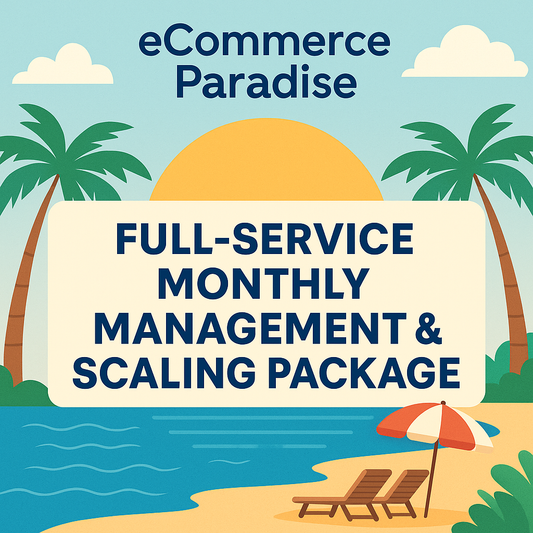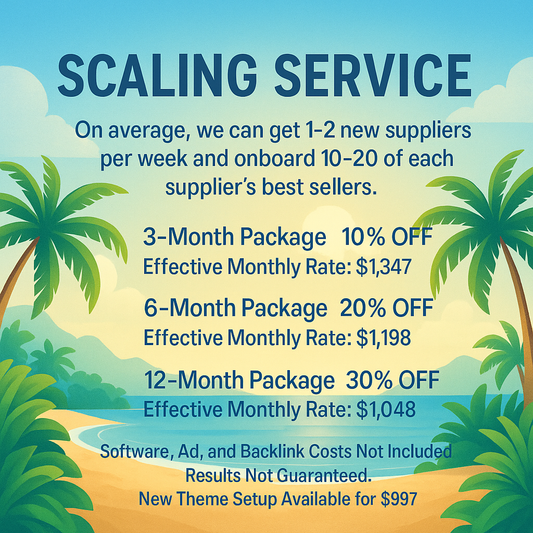How to Structure Your Shopify Store for SEO (Step-by-Step Guide)
Build your store like a pro so Google and customers love it.
If you’ve ever wondered why some Shopify stores rank easily and others never show up on page one — it’s usually structure.
Even with great content, if your store is disorganized, buried in submenus, or has broken links — Google won’t rank it.
In this guide, I’ll break down exactly how to structure your Shopify store for maximum SEO impact.
🧱 Why Site Structure Is Critical for Ecommerce SEO
Think of your website like a library.
If everything is clearly labeled, organized by topic, and easy to navigate — it’s useful. Both humans and Google can understand it.
But if it’s a mess of random shelves, buried content, and dead ends — no one wants to deal with it.
Great structure = better rankings + better user experience.
🧭 What Makes a Good SEO Site Structure?
A good structure helps you:
-
Organize pages into logical topics
-
Tell Google which pages are most important
-
Pass authority from your homepage to deeper pages
-
Help customers find what they need fast
-
Build more internal links naturally
🔧 Step 1: Use a Flat Site Architecture
You want your Shopify store to be flat, not deep.
That means every important page should be no more than 3 clicks away from the homepage.
Example:
✅ Good Structure:
Homepage → Collection Page → Product Page
❌ Bad Structure:
Homepage → Dropdown Menu → Subcollection → Filter → Product
The deeper the page, the harder it is for Google to crawl it — and the less authority it gets from your homepage.
🧰 Step 2: Clean Up Your Navigation
Your main menu should:
-
Feature top-level collections (not every product)
-
Use clear, keyword-rich labels (e.g. “Off-Grid Solar Kits” instead of “Shop Now”)
-
Avoid too many dropdown layers
-
Include links to blog, about, contact, etc.
💡 Pro Tip: If you sell across multiple categories, consider a mega menu to keep it organized.
🗂️ Step 3: Use Collections Strategically
Collections = your biggest SEO asset.
Every collection page should be:
-
Focused on a keyword (e.g. “Tiny Home Appliances”)
-
Filled with relevant products
-
Optimized with a unique description, H1, and meta info
-
Internally linked to from other pages and blog content
Most Shopify stores use collections as simple filters — but smart stores treat them like landing pages.
🔗 Step 4: Build Internal Links
Internal linking is a superpower for SEO.
Link related blog posts to collections.
Link collections to relevant products.
Link products back to blog content (FAQs, reviews, comparisons).
The more connected your site is, the easier it is to crawl — and the more authority each page shares.
🧼 Step 5: Keep URLs Clean and SEO-Friendly
Shopify gives you clean URLs by default, but avoid unnecessary junk like:
/collections/all/products/12345?id=983476
Use:
/collections/solar-generators/products/bluetti-3000w Best Practices:
-
Keep it short, readable, and keyword-focused
-
Don’t use underscores or uppercase letters
-
Avoid dates or unnecessary categories unless helpful
🧠 Bonus: Add Breadcrumbs and Schema
Breadcrumbs help users navigate — and help Google understand page hierarchy.
If your theme doesn’t support them, consider using a Shopify app or switching to a better theme.
Also: implement basic schema markup (product, review, FAQ) to boost how your pages appear in search results.
✅ Shopify Store Structure Checklist
-
All key pages are within 3 clicks of the homepage
-
Collections are keyword-focused and unique
-
Main menu is clean and clear
-
Internal links connect blog, products, and collections
-
URLs are short and SEO-friendly
-
Breadcrumbs + schema are added where possible
🔥 Final Thoughts
Most ecommerce store owners overlook structure — and pay for it later.
But if you get this right from the start, you’ll make everything else easier: content, SEO, ads, even conversions.
Clean up your structure now — and watch your rankings rise.
📥 Want Help?
Next up:
➡️ How to Do On-Page SEO for Your Product Pages, Collections, and Blog


















